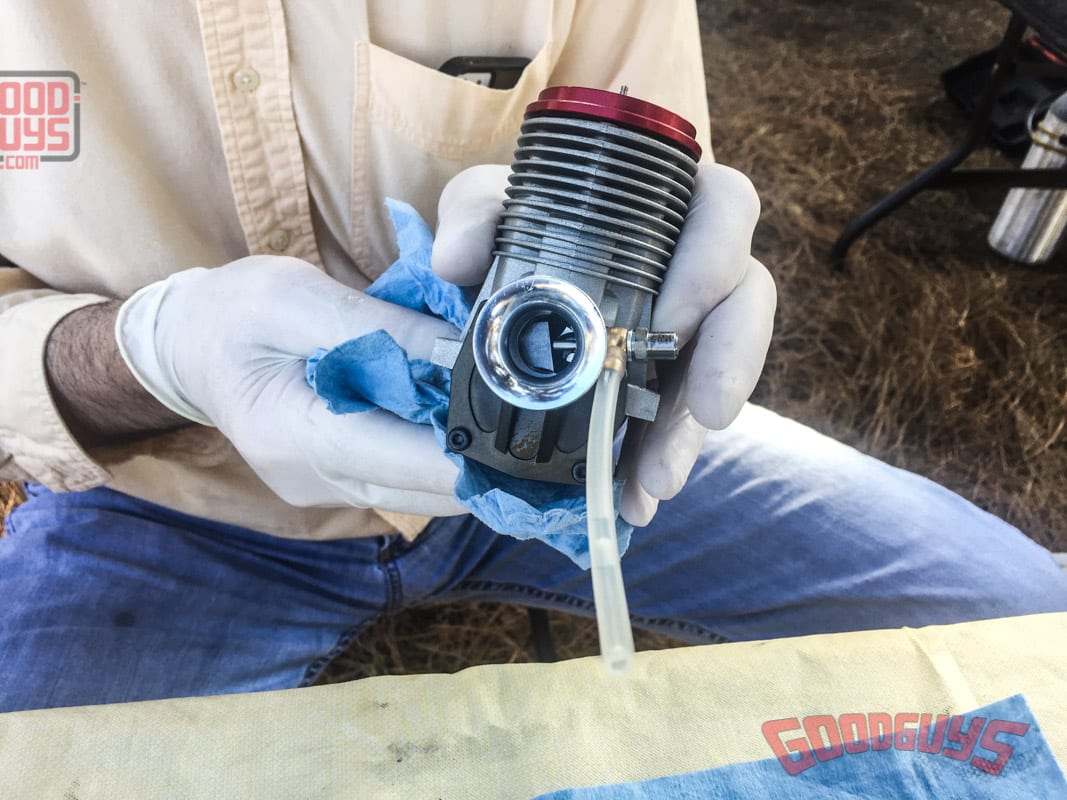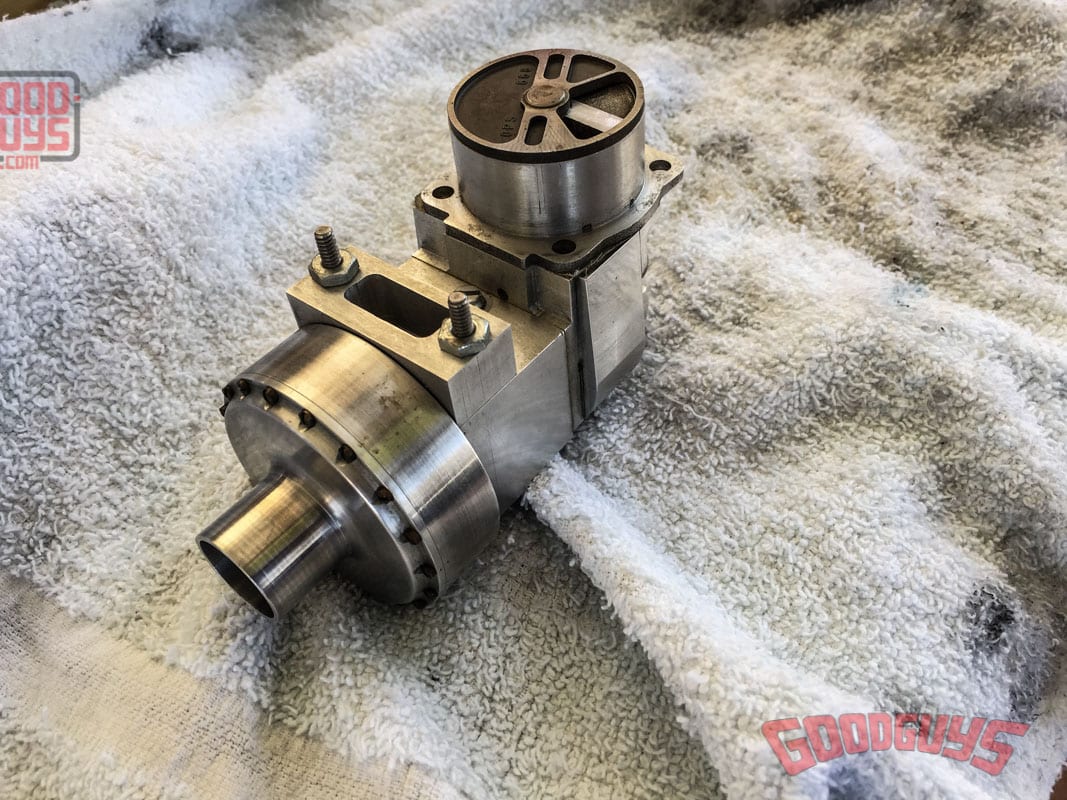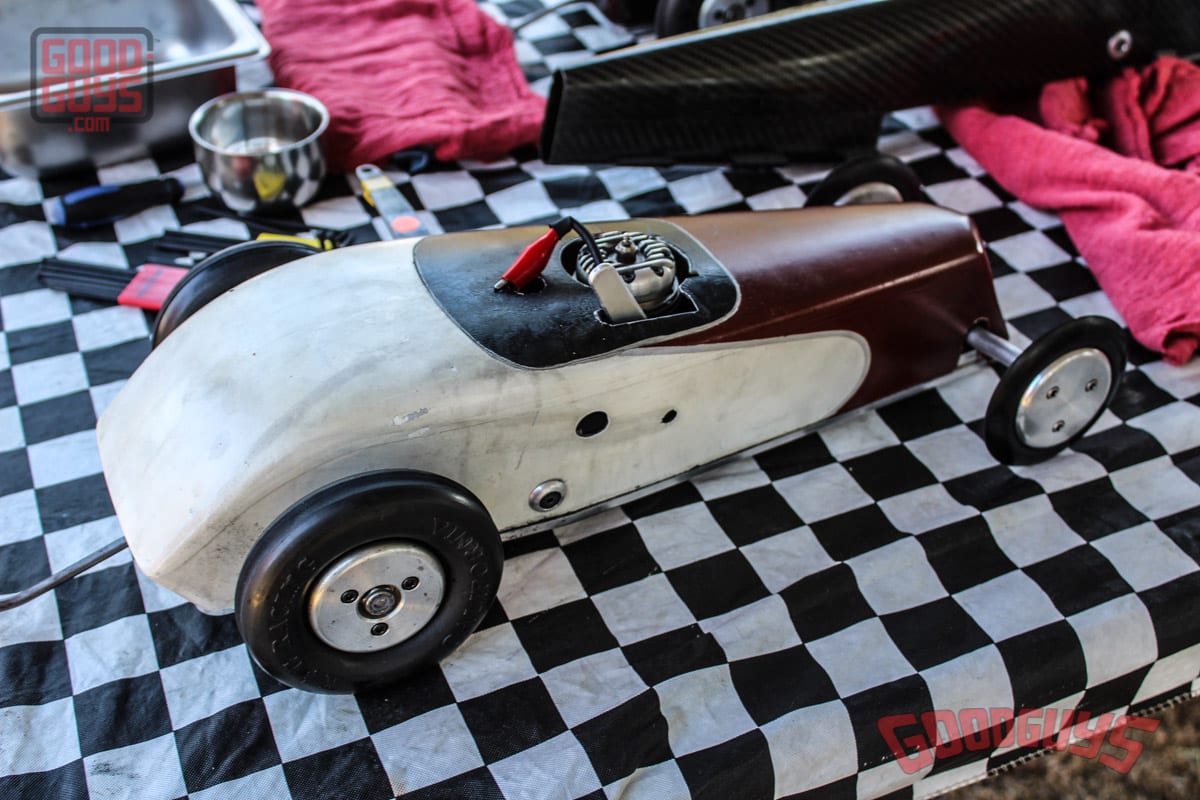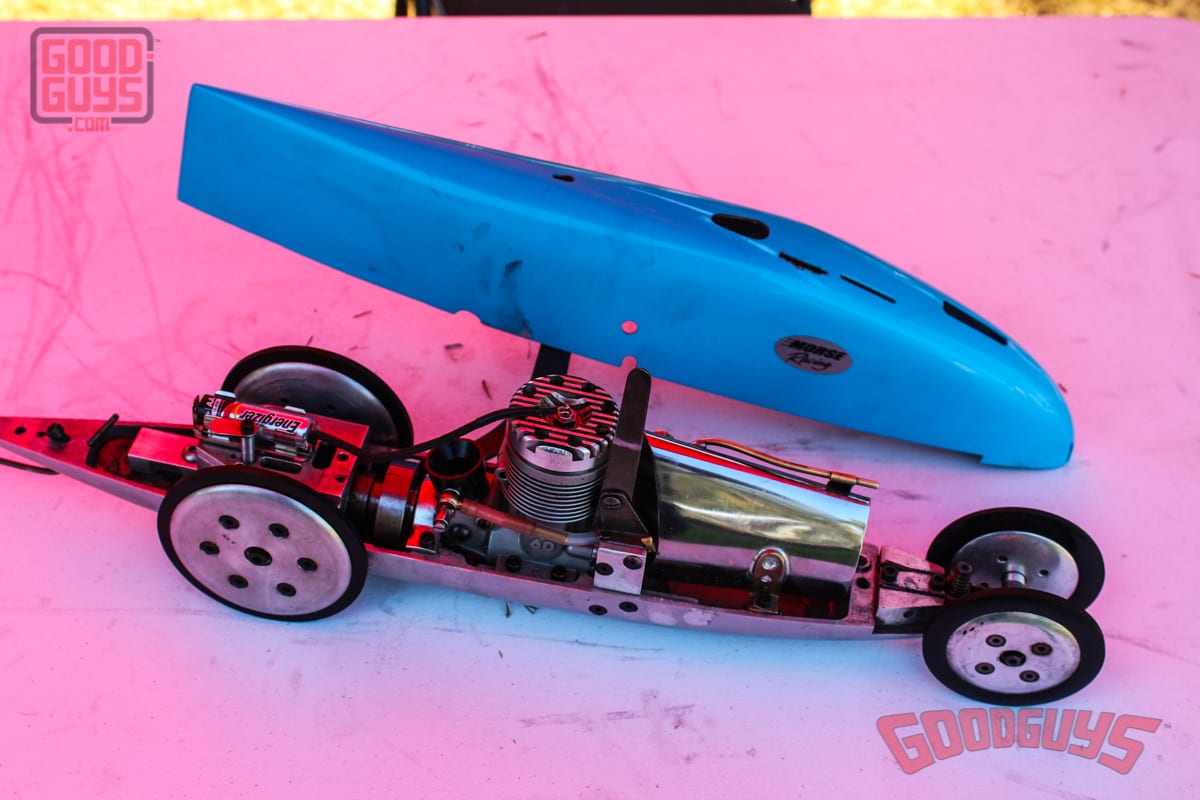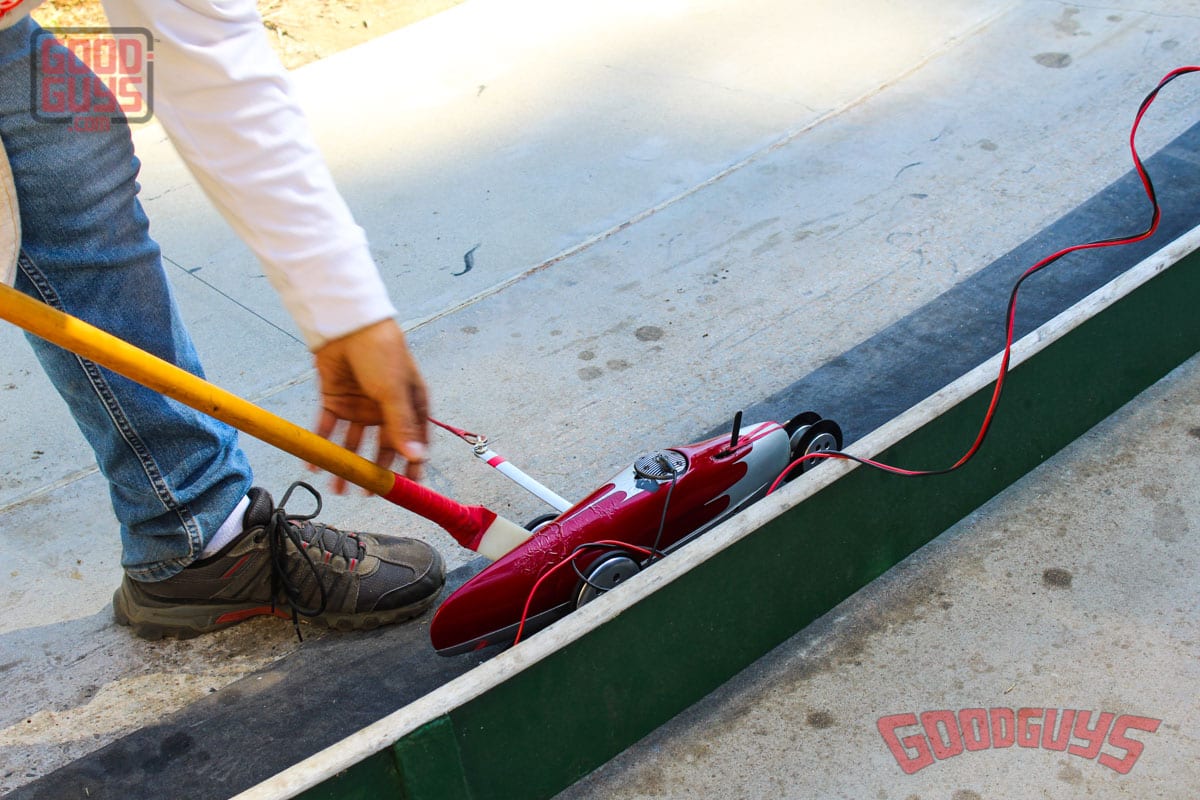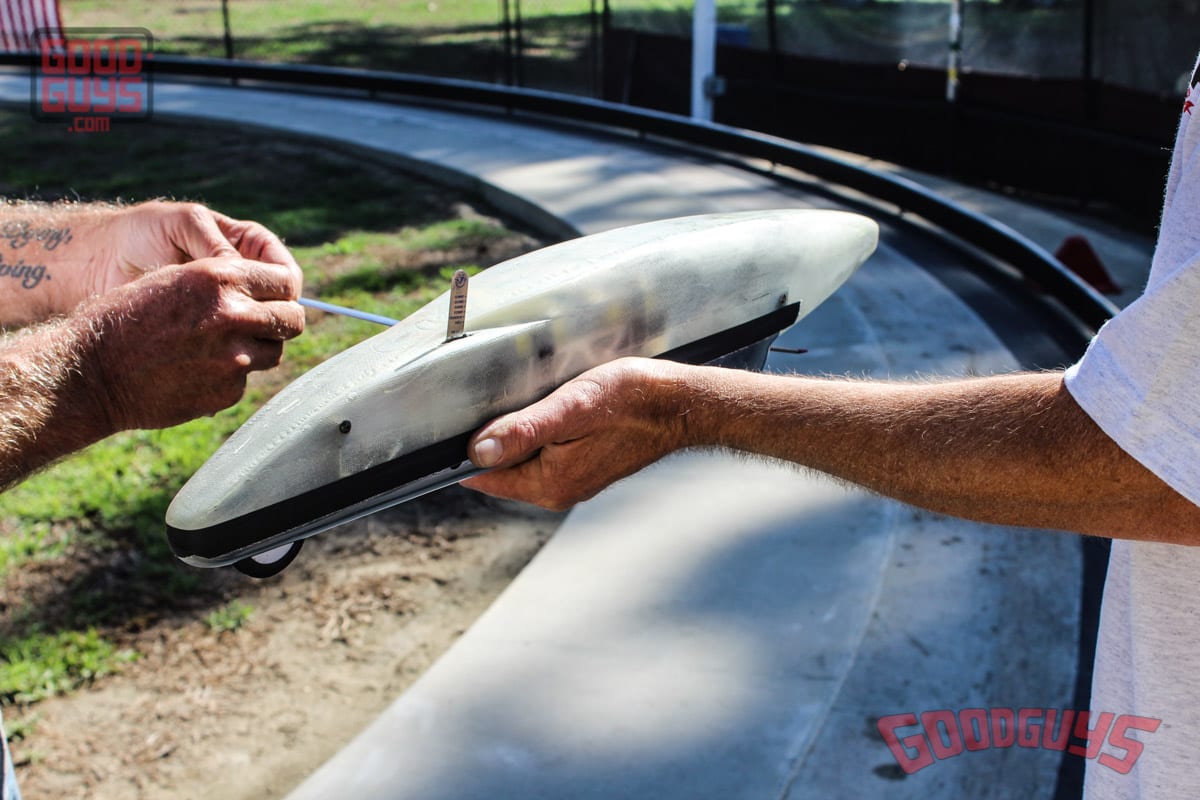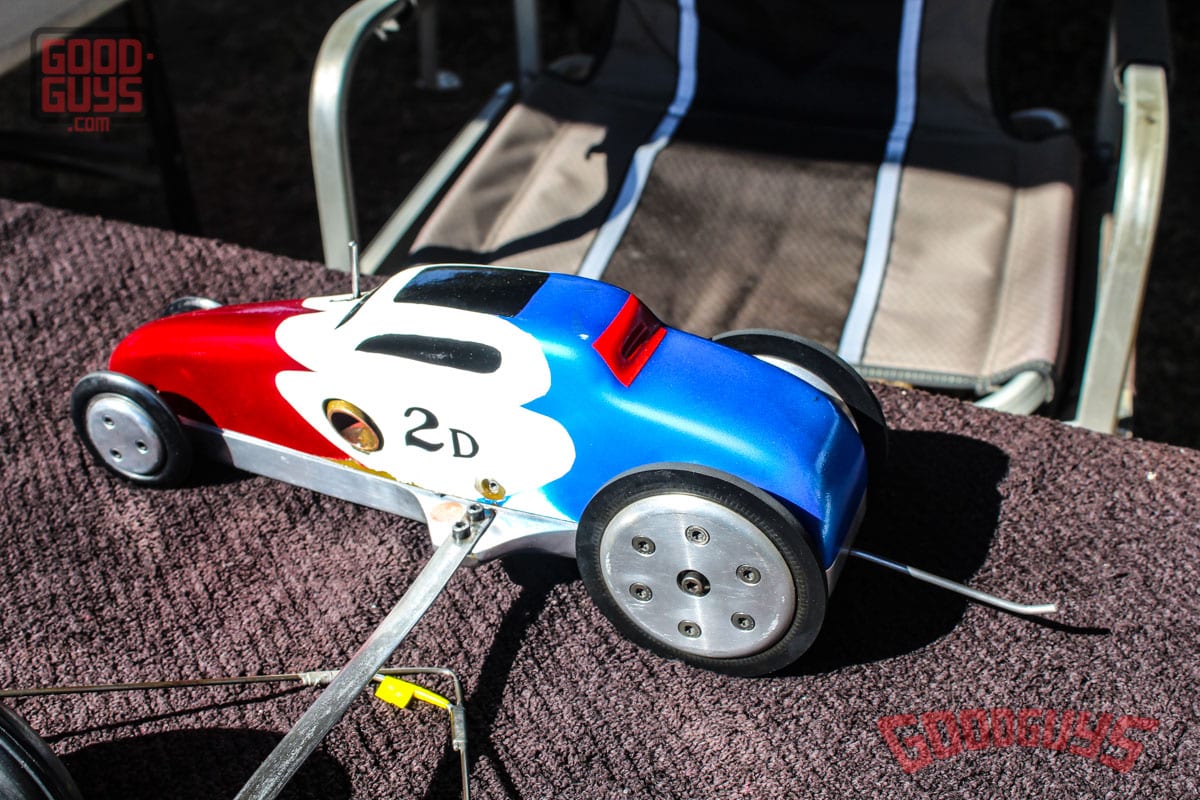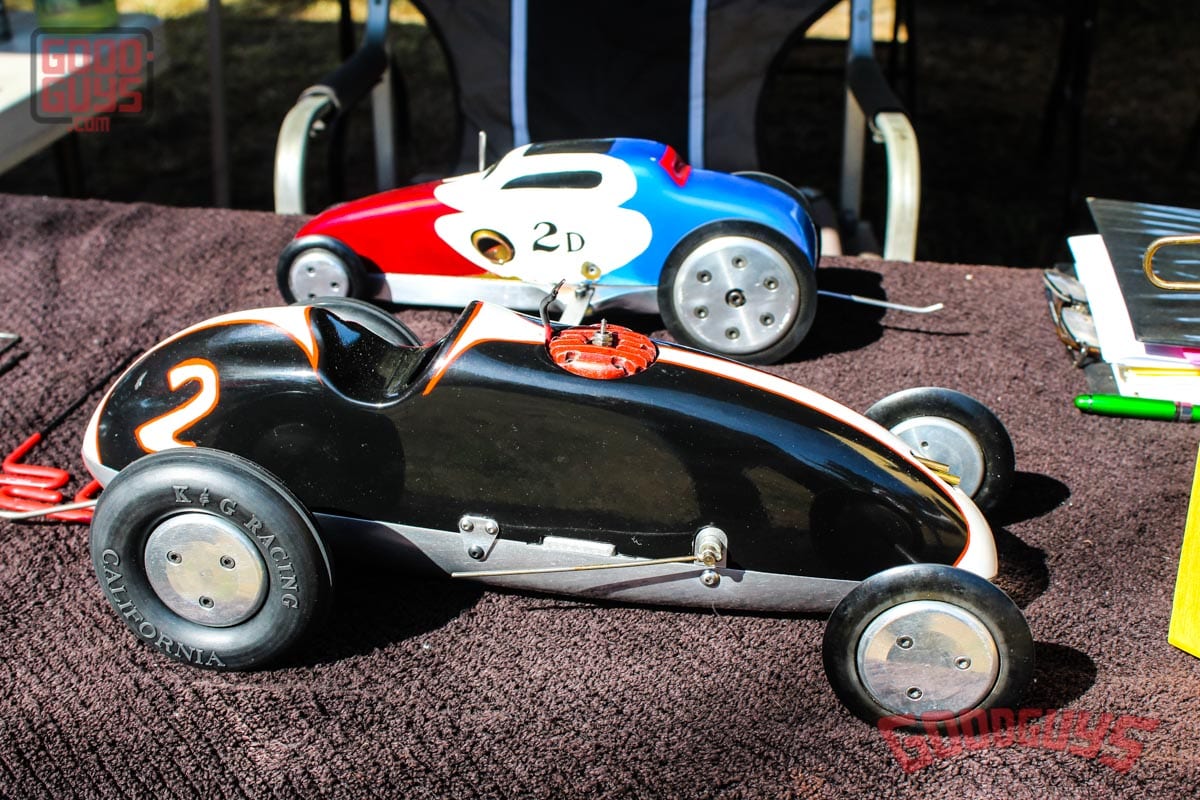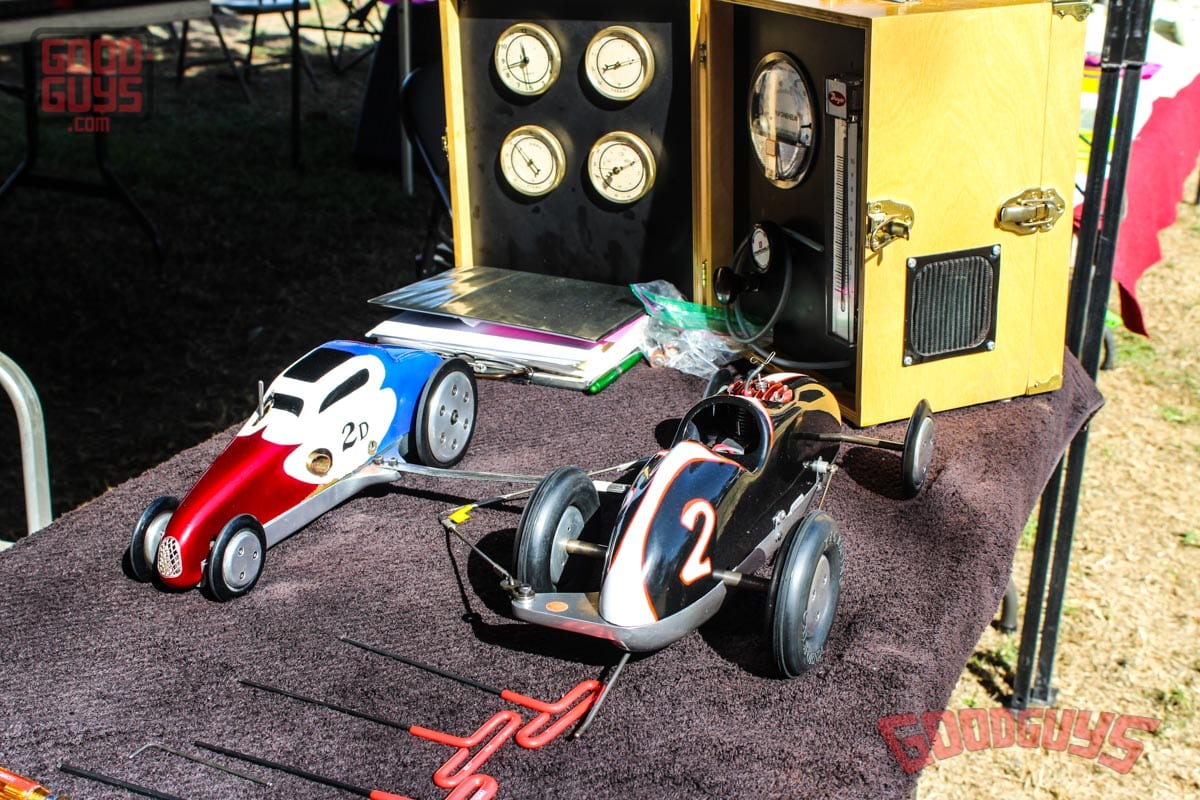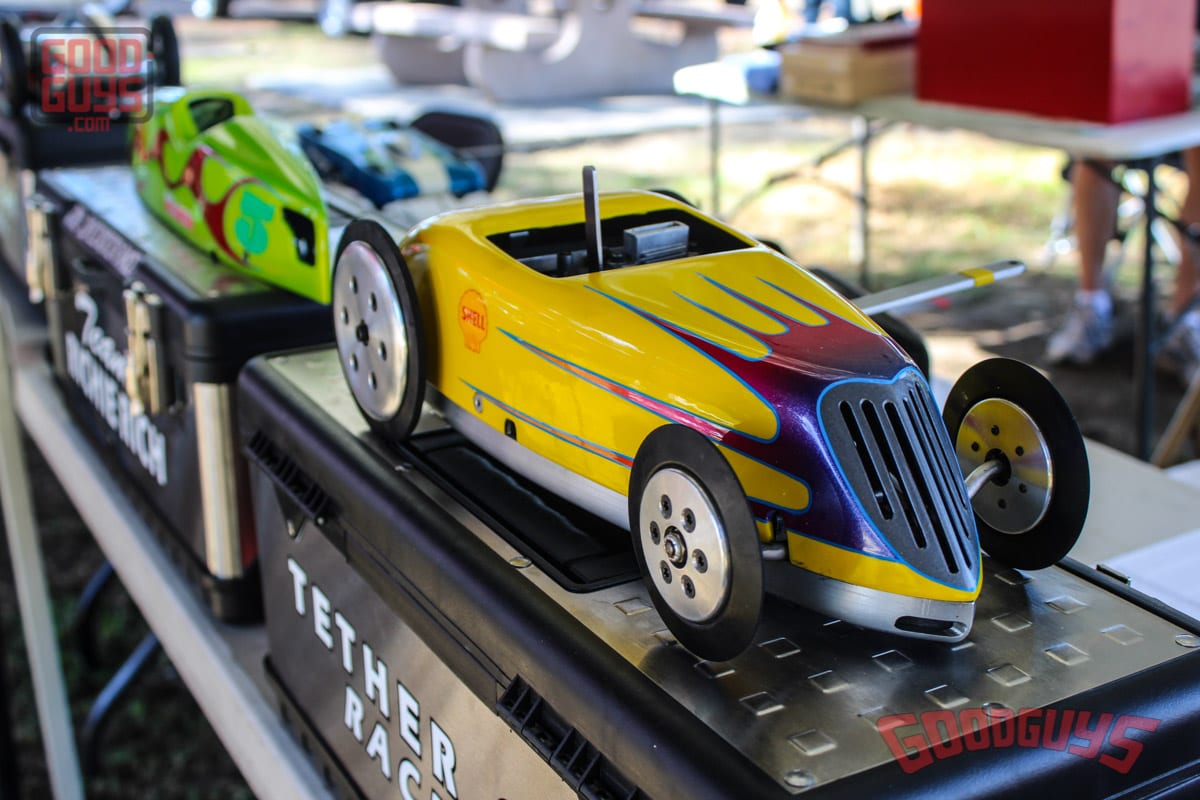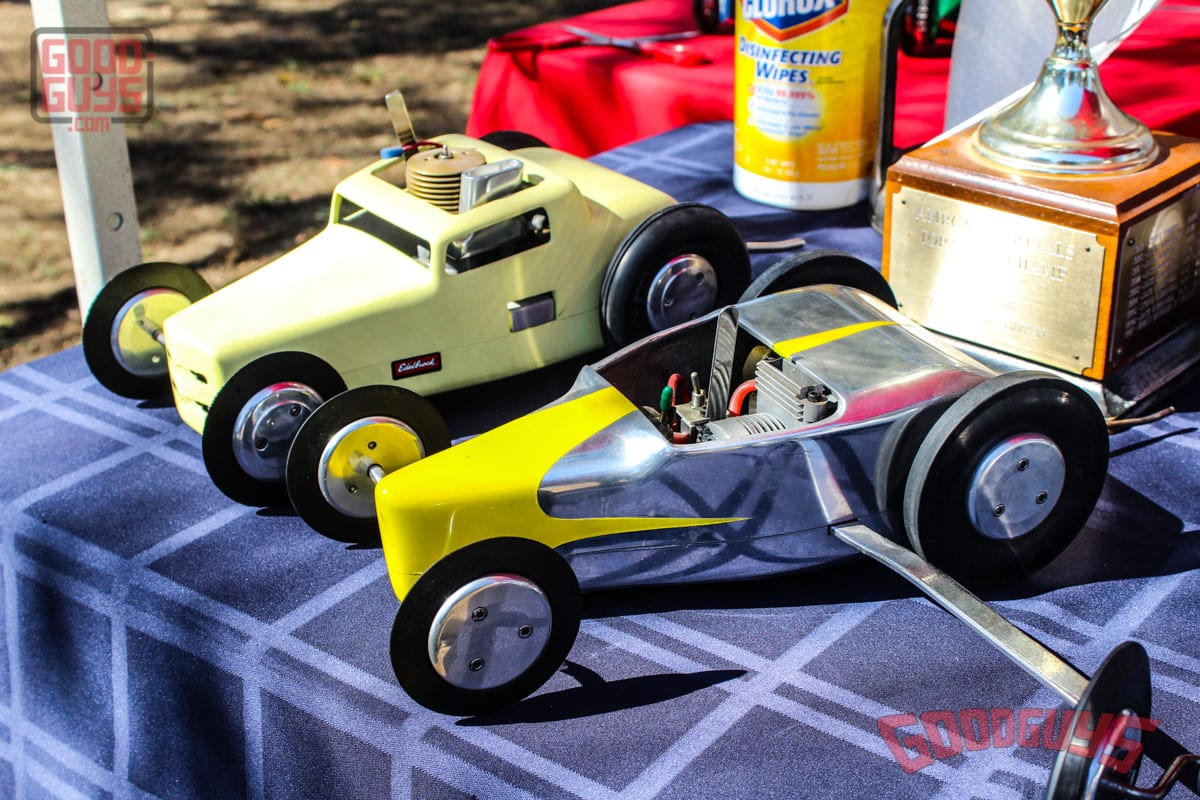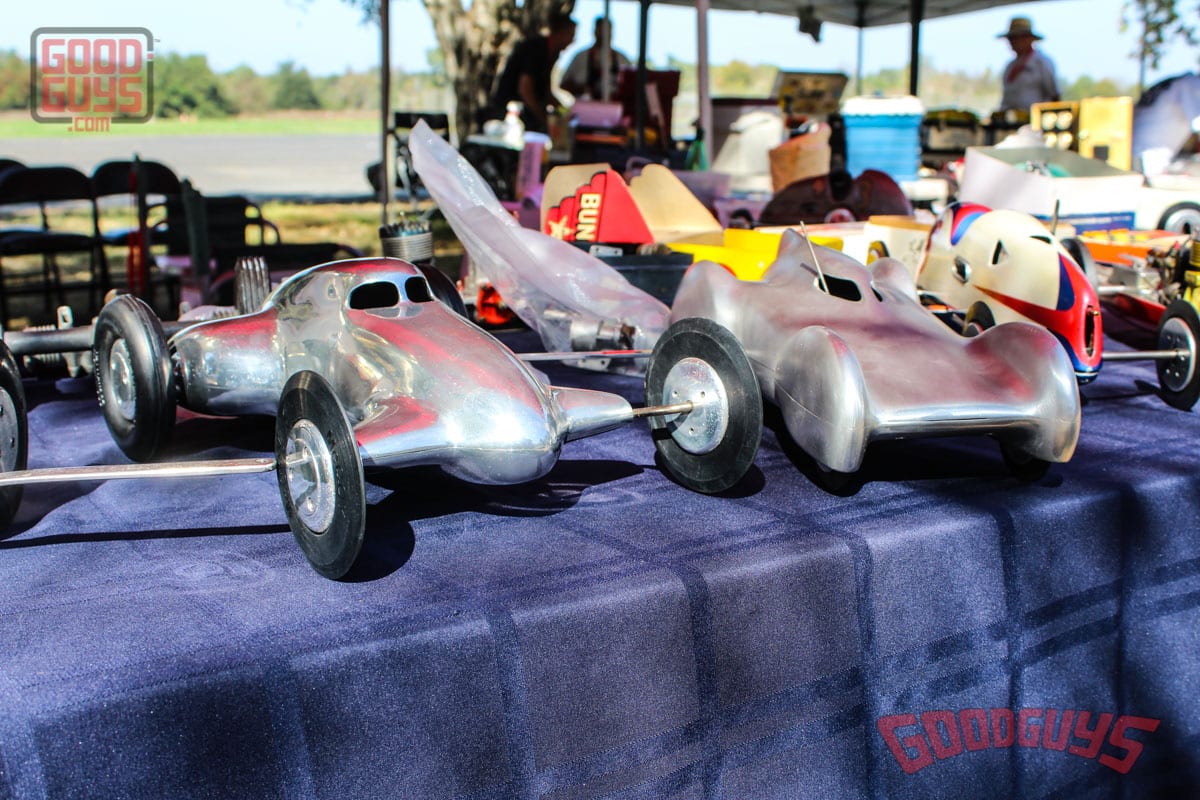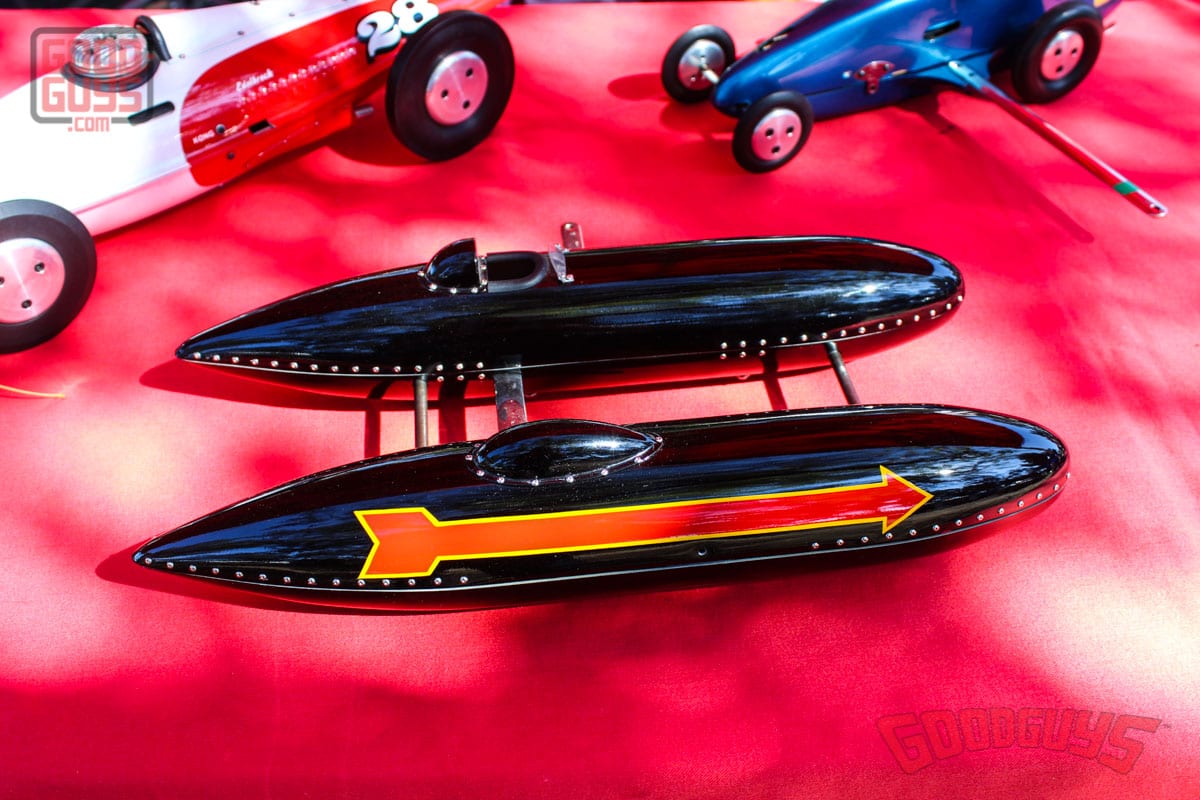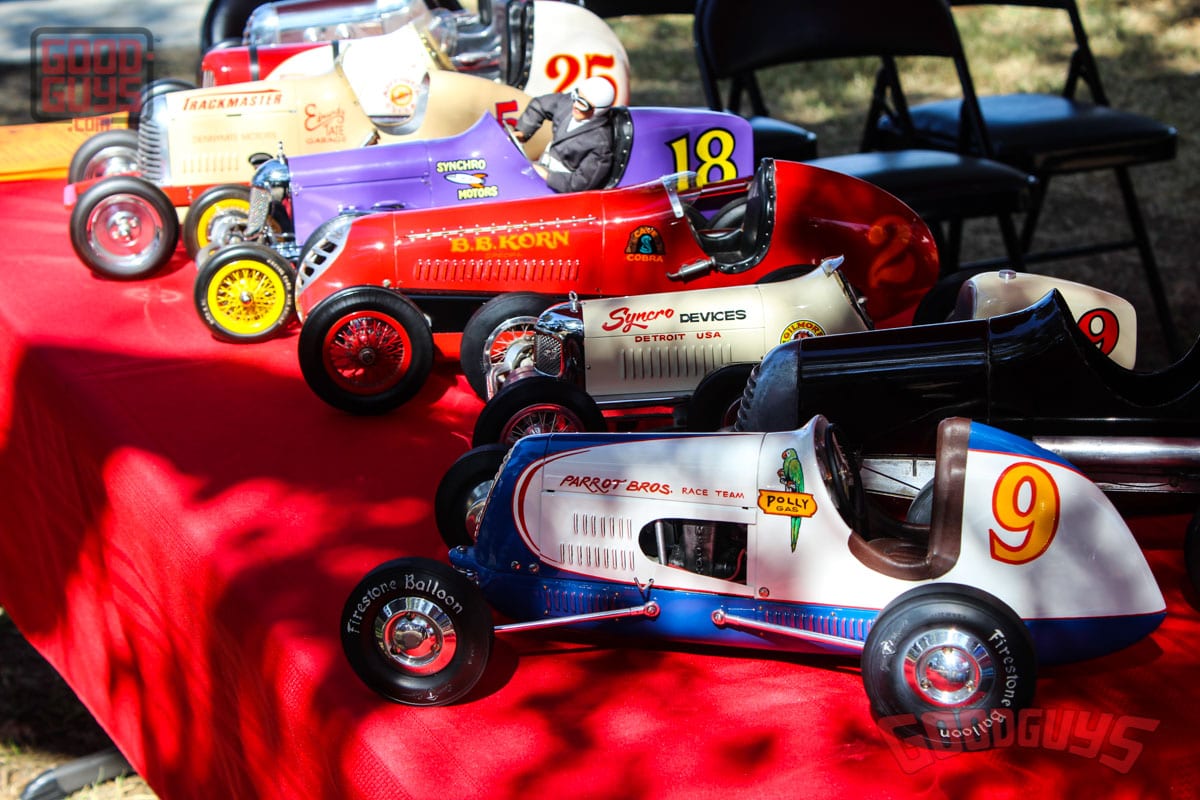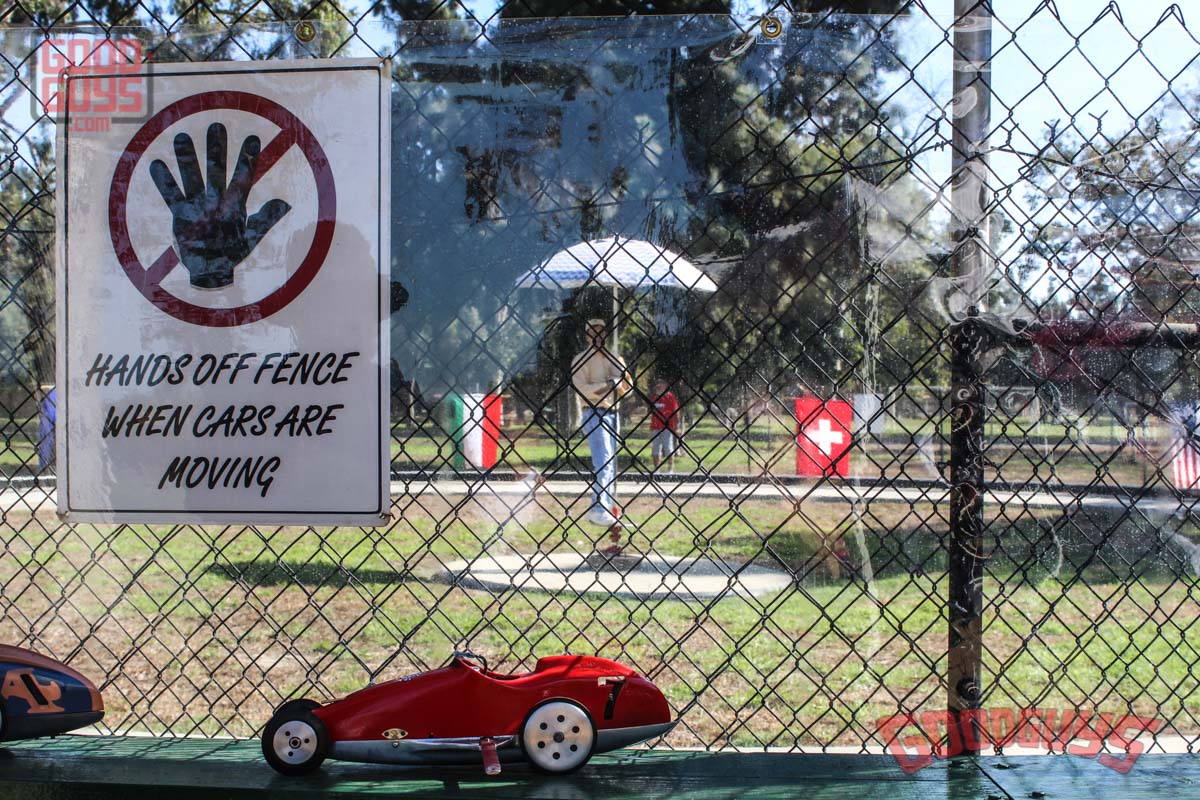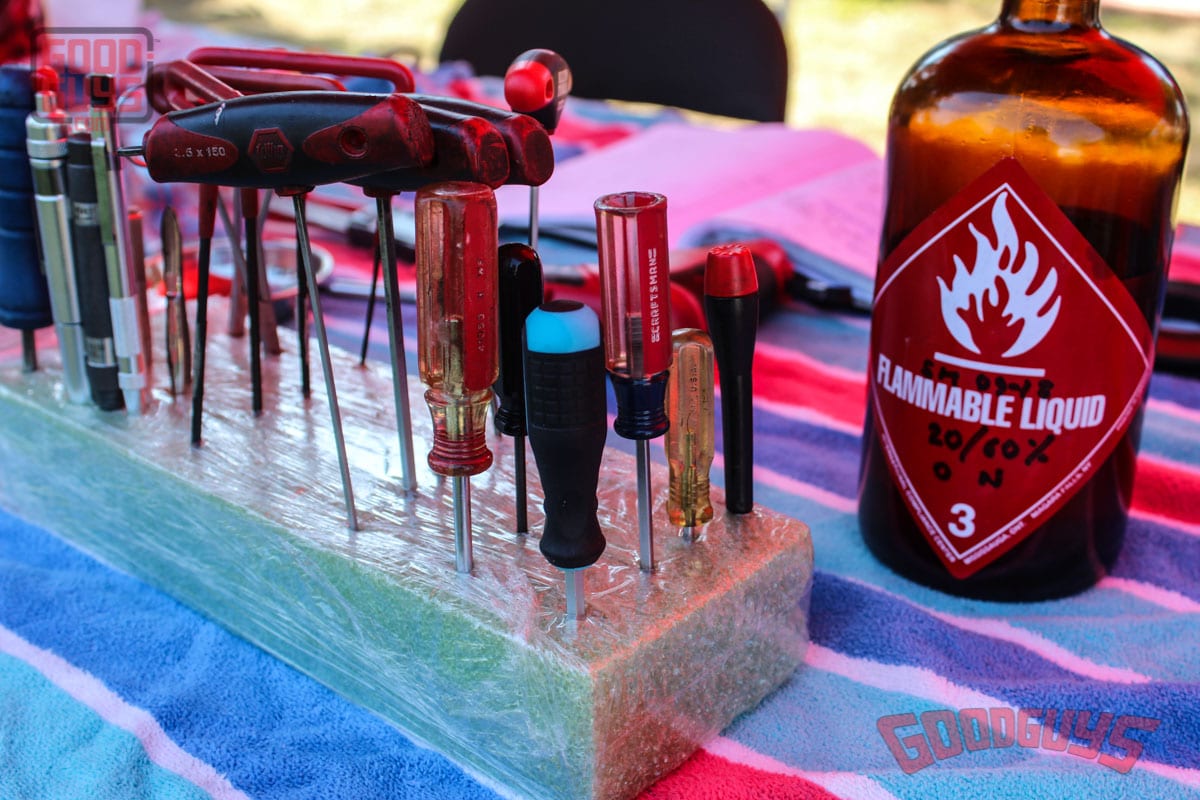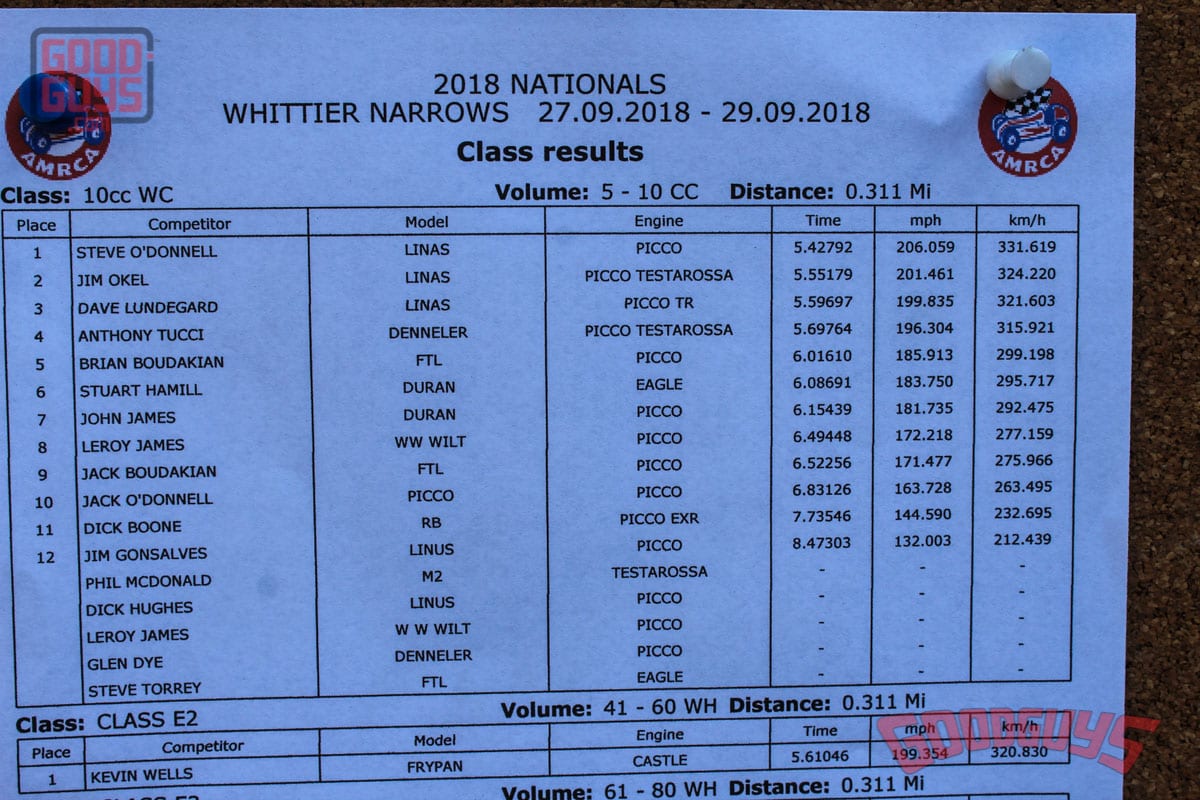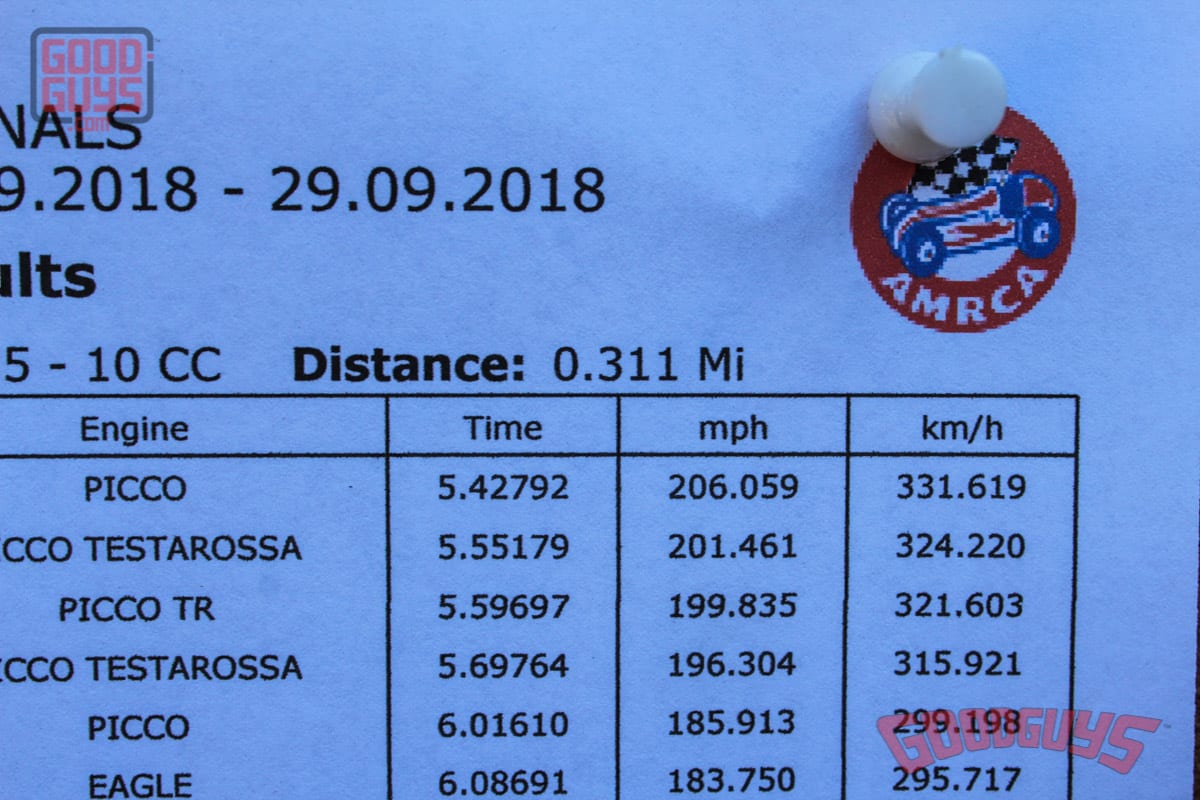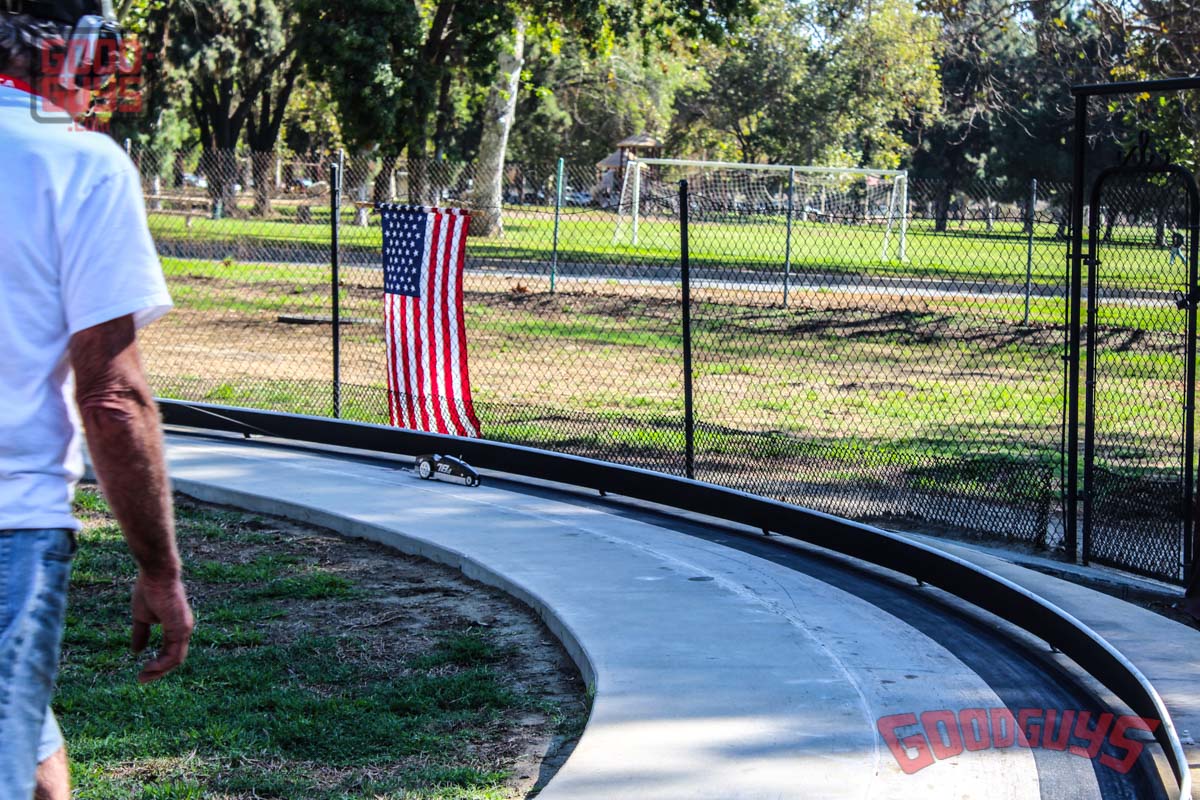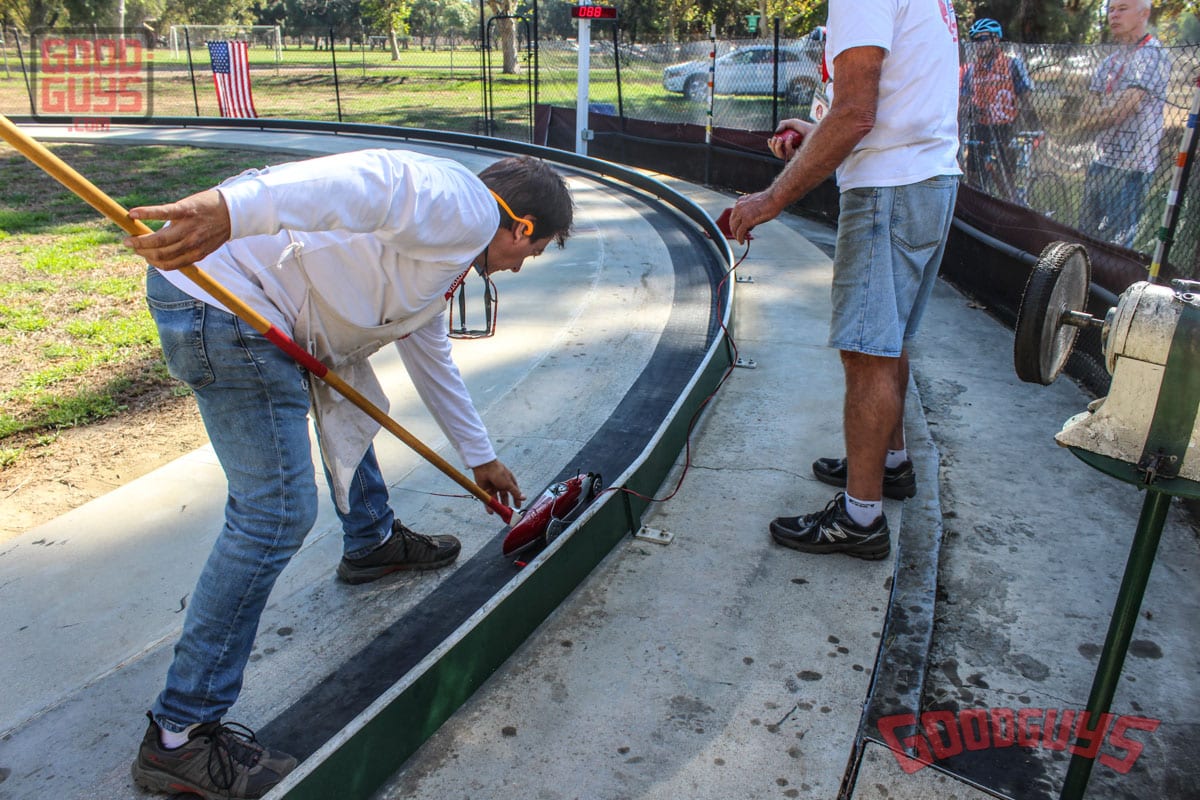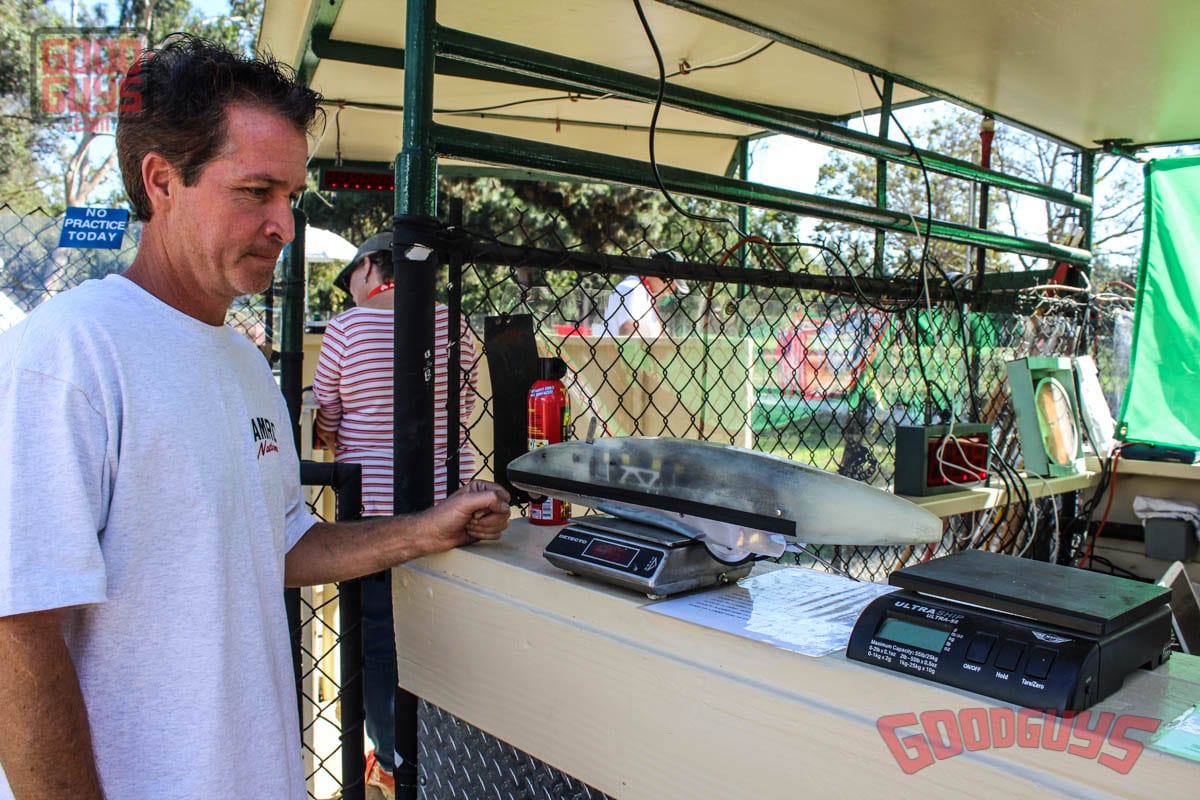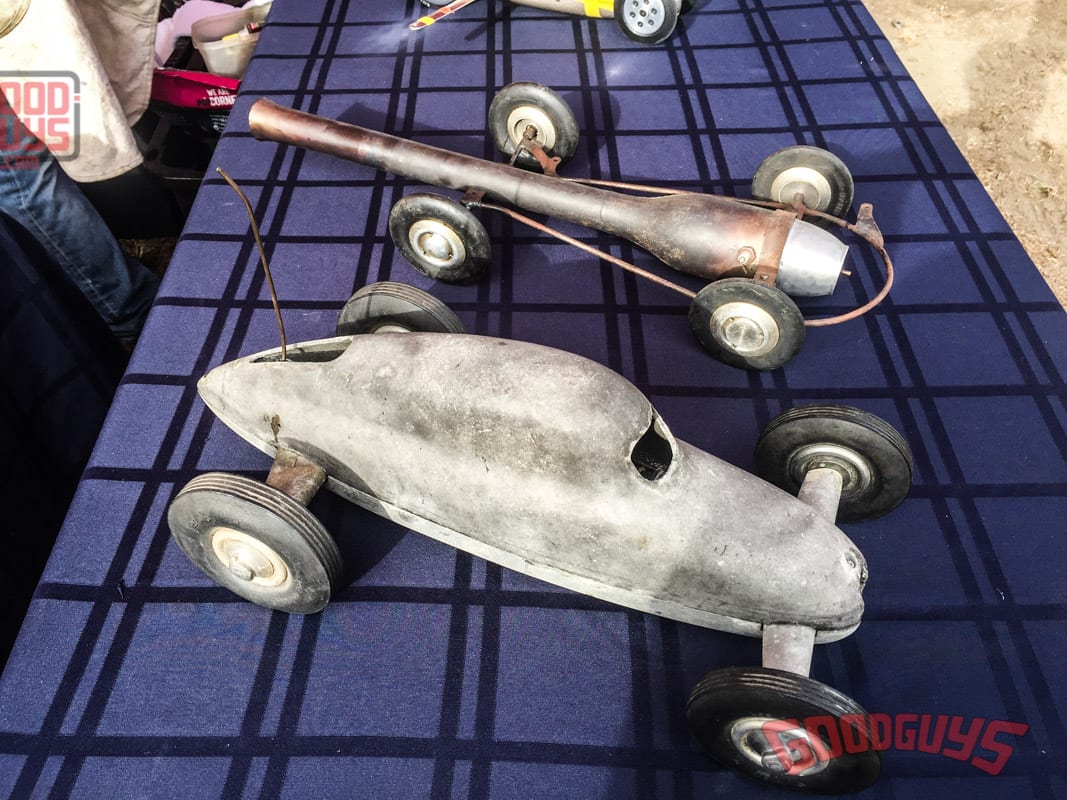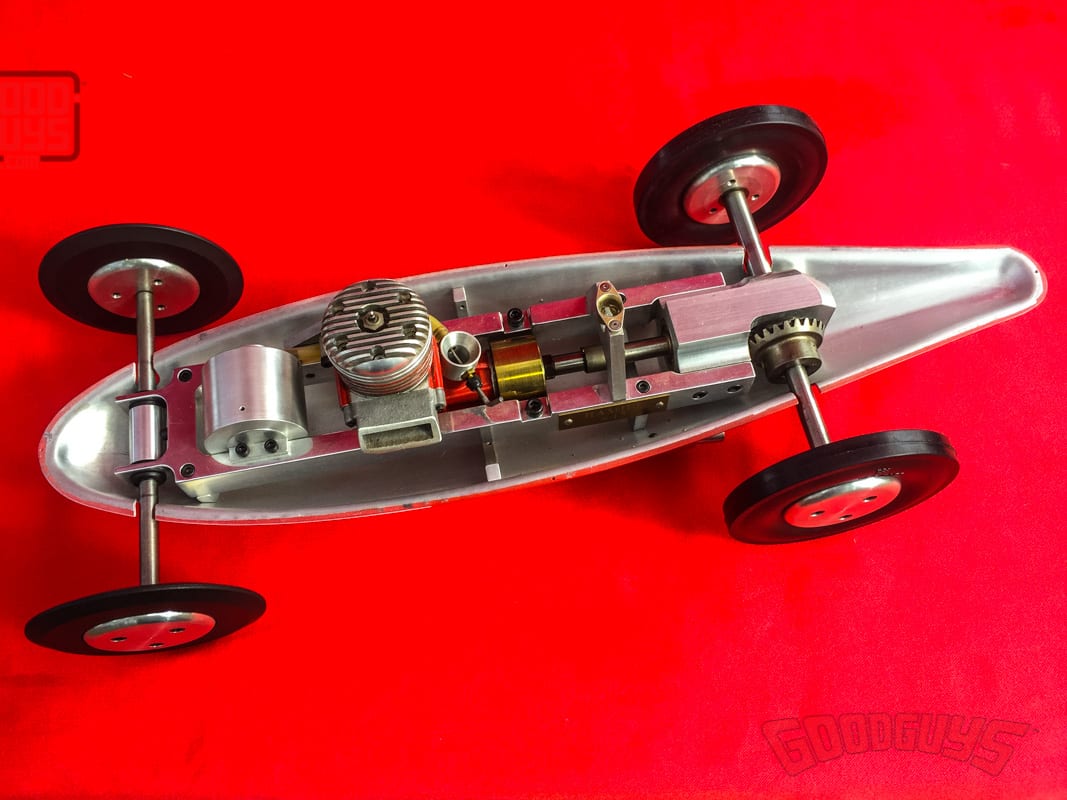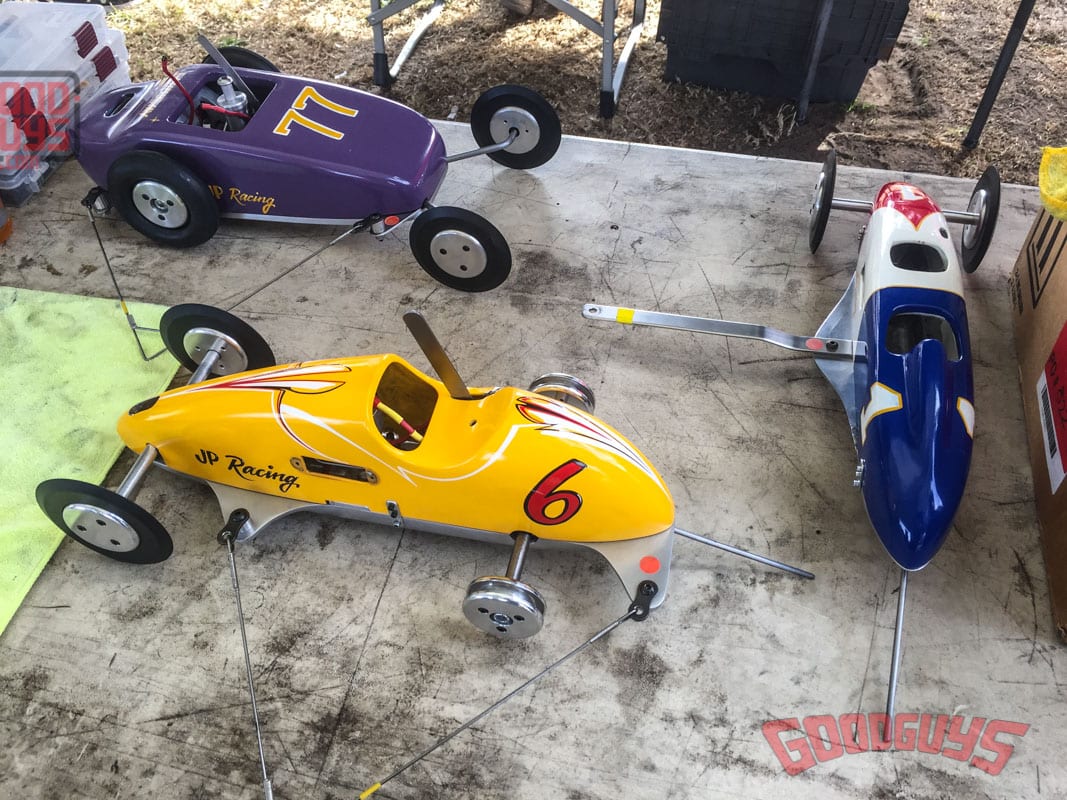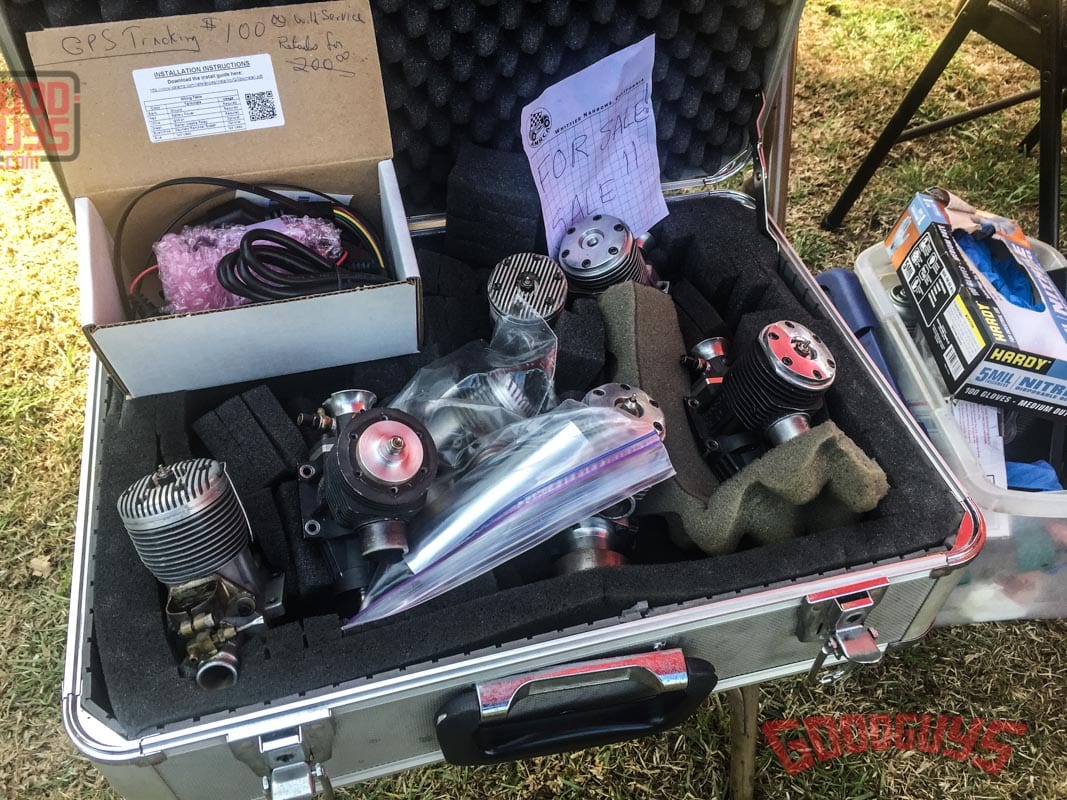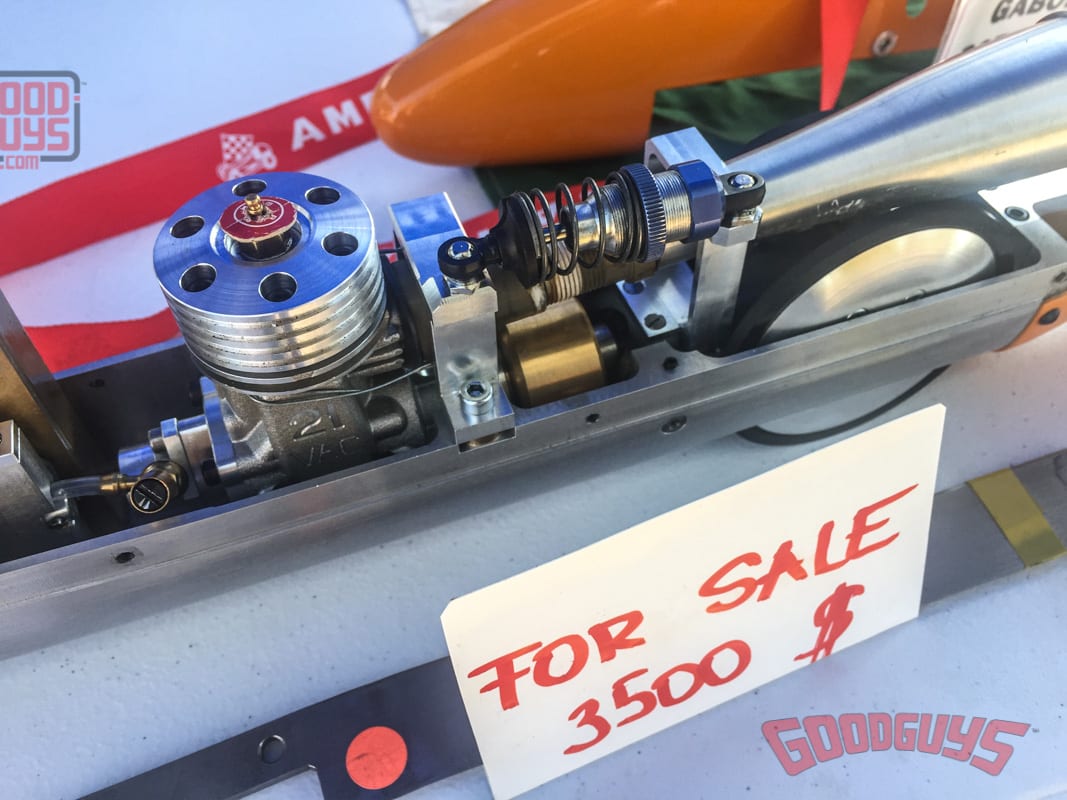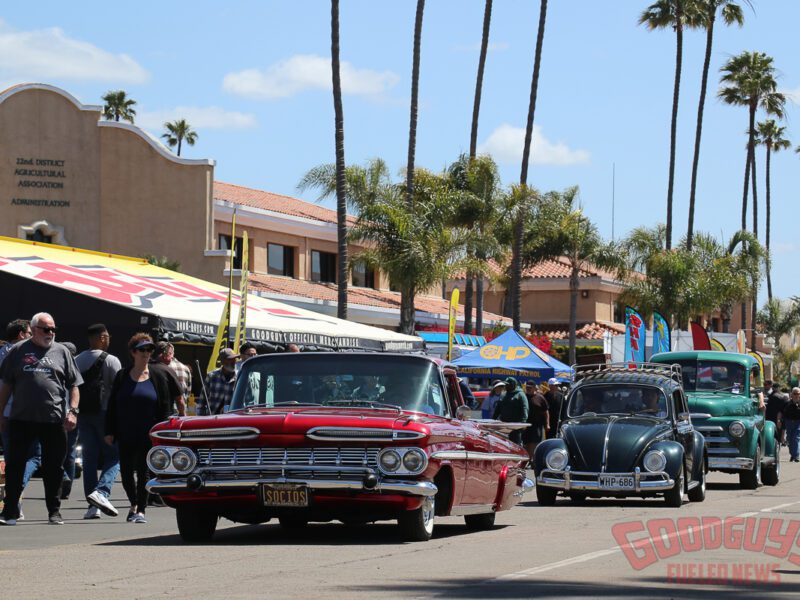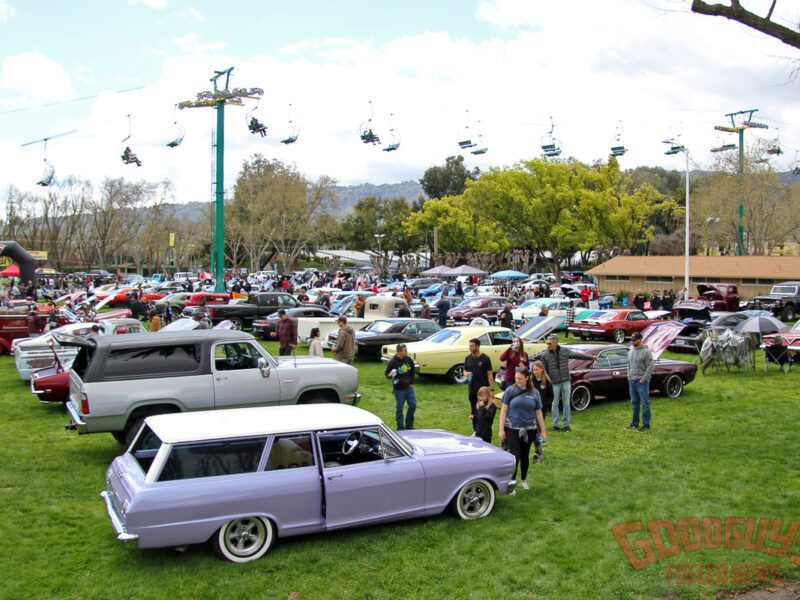Spin Dizzy Tether Car Nationals – 10cc on Nitro!
Tether Cars are little known wonders of hot rod history. Before there was remote or radio control (RC) there was a bit of wire called a tether and the cars were often called ‘spin dizzies’ because they whipped around the track so fast you got dizzy watching them. My daughter called them ‘no see ’ums’ when we first visited the only track west of Pecos in Whittier, California.
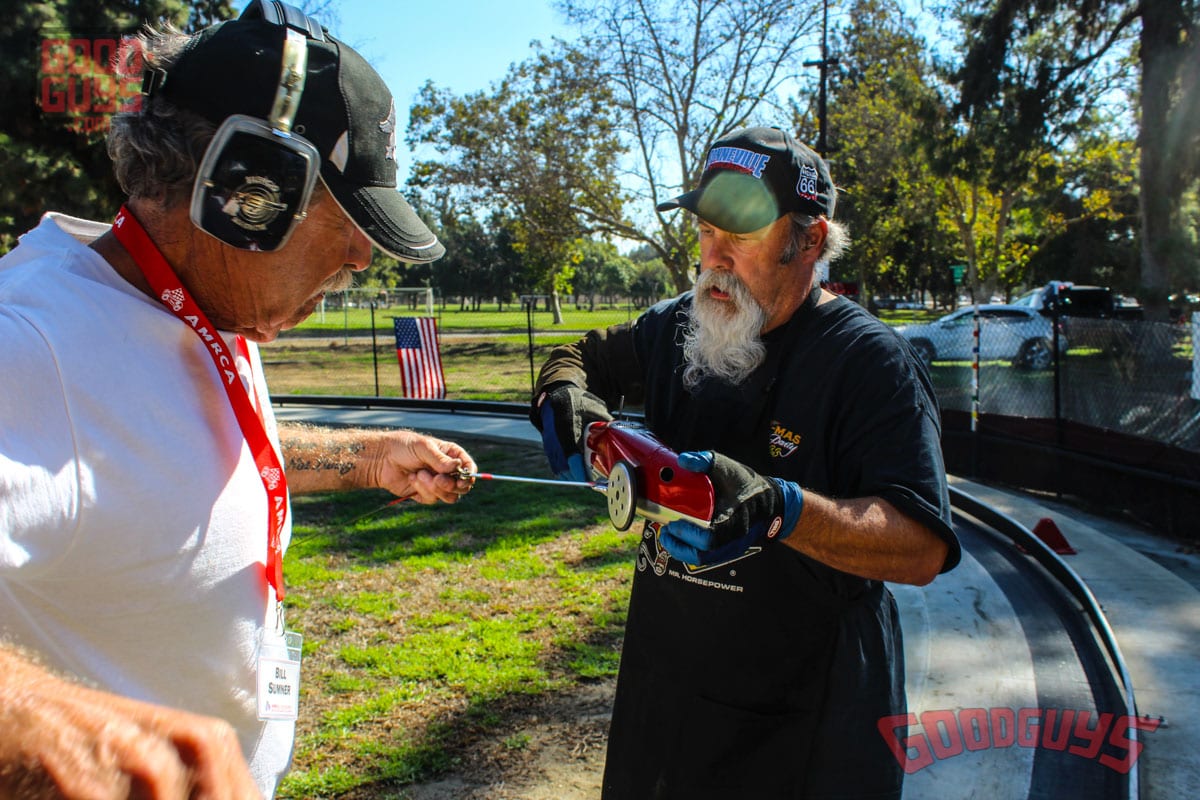
Tether cars, to use their real name, got their start in the mid-30s when Midget Auto Racing became popular and somebody transplanted a model airplane engine into a four-wheel chassis. Like their flying counterparts, the cars were controlled or tethered by a wire.

Back then, 40 mph was fast and when exhibition runs were made at the 1939 New York World’s Fair the hobby took off. In 1940, R.E. “Dick” Hulse founded the American Miniature Racing Car Association which is still going and by the start of World War II there were 55 companies making scale race cars using single cylinder, two-cycle, air-cooled engines.

After the War, as did all things automotive, tether car racing boomed as interest grew and folks had money to spend. One of the foremost producers of racecars was Roy Richter owner of full-size speed equipment purveyor Bell Auto Parts, Bell, California. His first production racer came in 1939 and his ‘Streamliner’ began to push up speeds towards 100 mph.
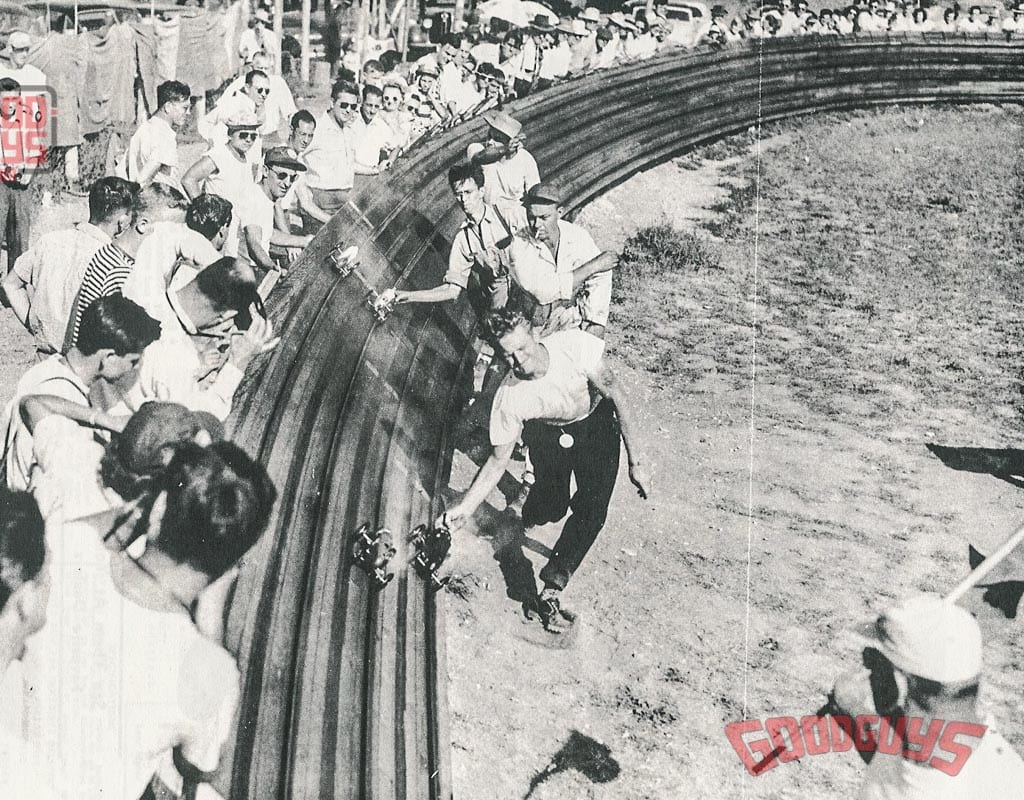
As an aside, because you can only race one tether car at a time against the clock, a system of 4-wide ‘rail car’ racing was introduced that was the forerunner of electric slot car racing. As popular as rail cars became the tether car won out in the end.
As with all types of racing, speeds increased to 100 mph and by the early-50s they were going over 150 mph using the legendary Dooling 61 engine in a car that had ceased to look anything like its full-size counterpart. Indeed, while some cars did look like full-size racecars many took on the sleep shape of streamlined, dart-like projectiles.
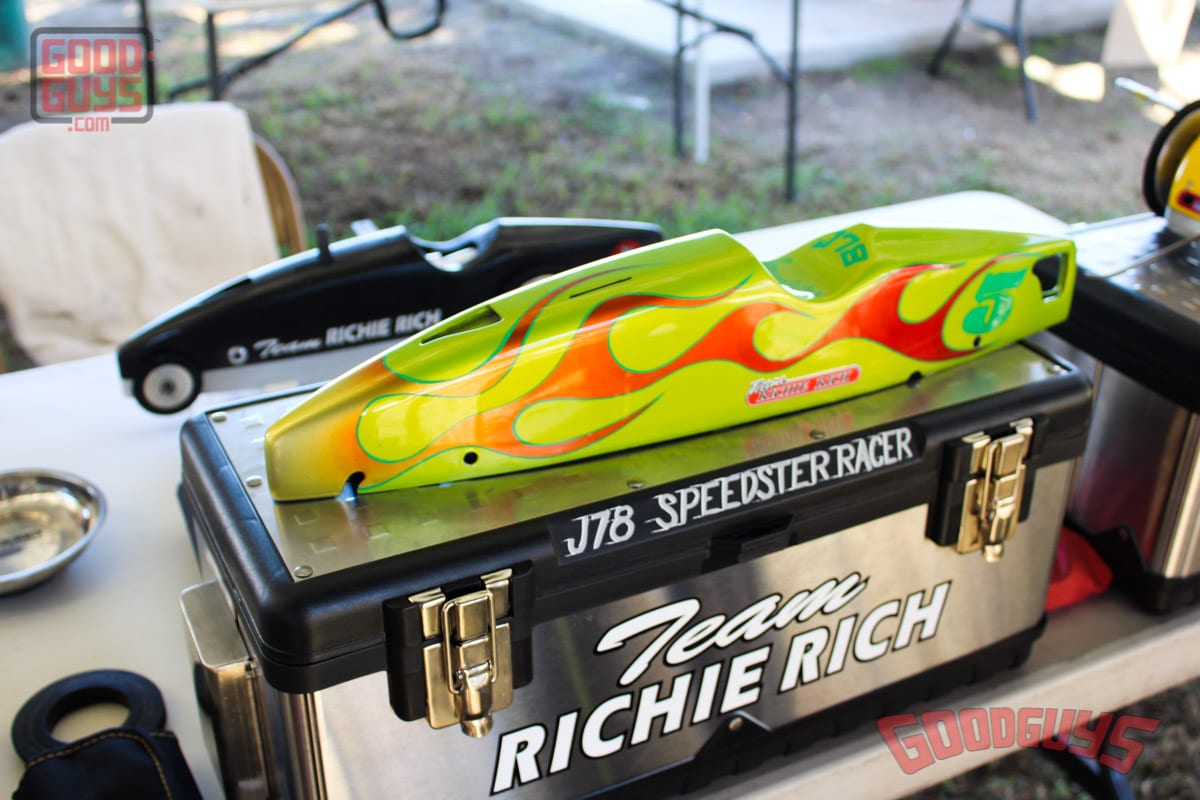
A decade of technological development can have an impact on any sport/hobby/industry and in the early-60s slot cars that had been invented in 1912 by Lionel became increasing popular. By the mid-60s there were said to be 3,000 commercial tracks in hobby shops and race clubs. That’s not to mention all the home-based tracks.
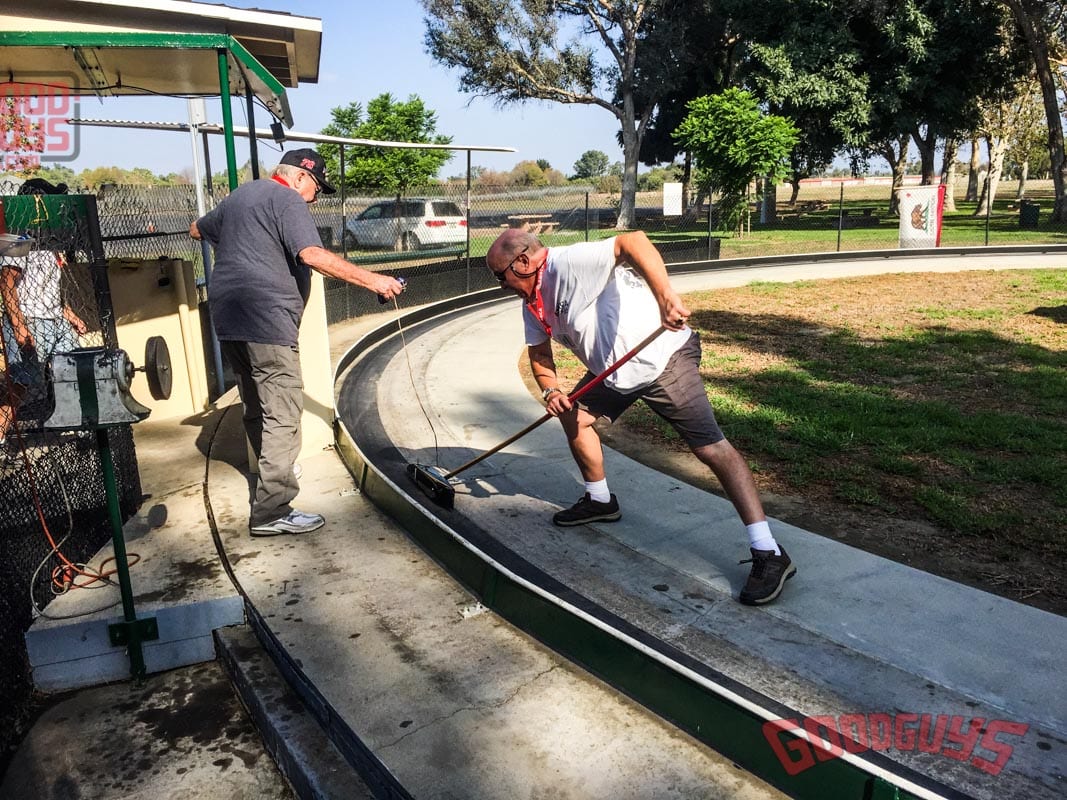
There were probably millions, however, in 1966 an Italian company El-Gi (Elettronica Giocattoli) from Reggio Emilia, just outside the Modena home of Ferrari, introduced a remote controlled 1:12-scale Ferrari 250LM. This was followed in 1968 by a 1:10-scle Ferrari P4, Meanwhile, in England, Mardave began to produce commercially viable RC Cars. You were no longer tethered to a track and as suddenly as the cell phone, RC killed slot cars and tether cars – the latter becoming dust collectors on the shelves of hobbyists who never raced them but pushed up the prices.
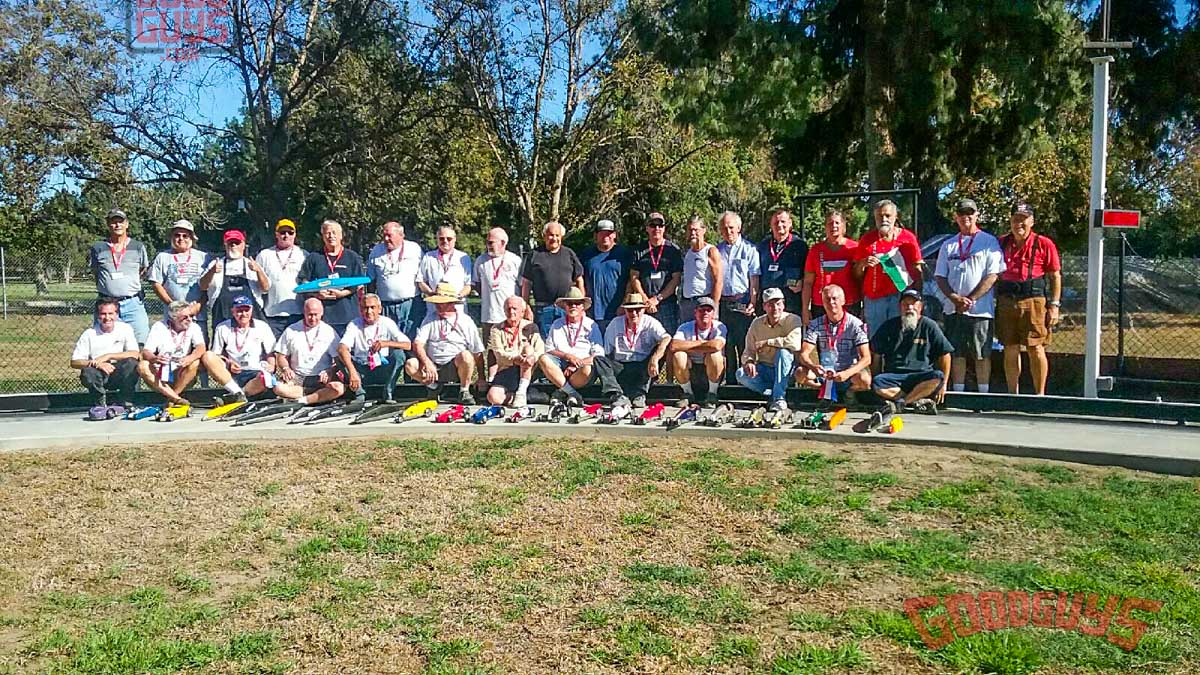

AMRCA is still very active and recently held their Nationals, actually an International event, at the Whittier track—there are only three permanent tracks left in the U.S. at Anderson, IN, and at Seaford, NY. Ironically, while it was Europe that help nail the lid on the tether car coffin, tether car racing is far bigger in Europe than it is in the US with tracks in England, Estonia, Germany, Hungary, Italy, Lithuania, Poland, Russia, Sweden, Switzerland, Ukraine and, of course, there are a couple tracks in Australia. Ironically, the most dominant engines are Picco made in Italy.
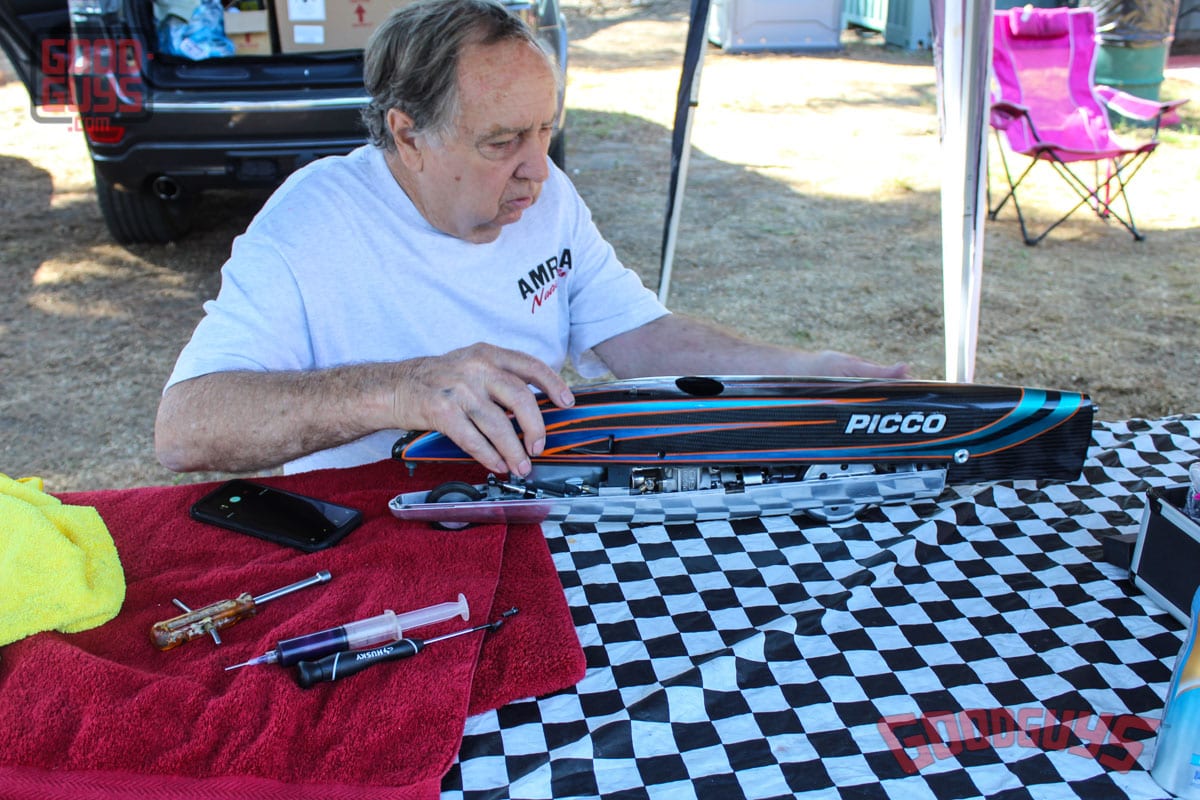

It was a nice southern California morning when I pulled into Whittier, where about 50 people were gathered around the 70-foot diameter circle of concrete. Three things surprised me: The average age of the racers was lower than I expected, the technicality of it all was way beyond what I imagined and the speeds were way faster that I expected. My friend Bob Jaquez introduced me around and explained some of the rules—you don’t just push it off and let her ‘er rip. It’s far more strategic that that. Everything from fuel (nitro), weight, balance, aerodynamics, even the thickness of the wire and even how the guy in the middle, the horser, gets your car off makes a difference.
Believe it or not, the fastest speed of the day was set by Tonu Sepp from Estonia whose Piccolina powered by a 10cc Picco Testatrossa engine went 206.363 mph. Staggering!
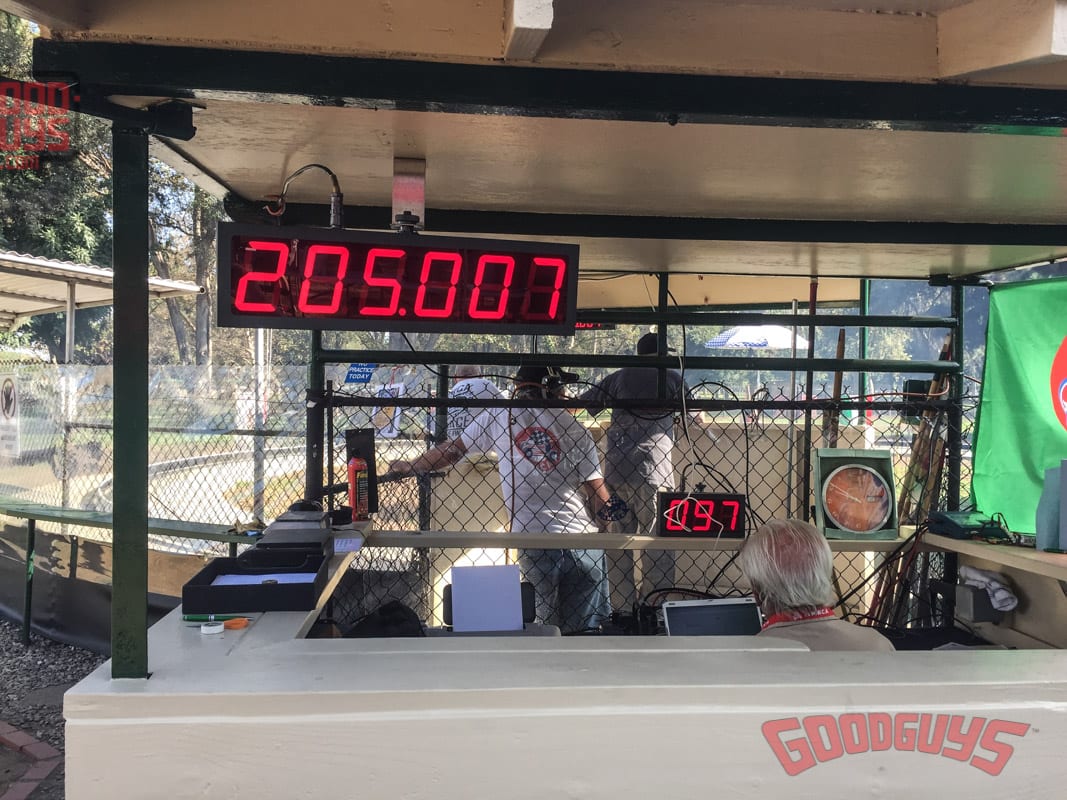

Equally staggering though was Kevin Wells home-built electric streamliner that went 199.354 mph. Incidentally, Kevin’s full-time occupation is competition director for Formula Drift. Kevin got interested because of the sport’s technical aspects that I have to agree are far more intriguing than I anticipated. If you want to build, restore and race a tether car, click here


